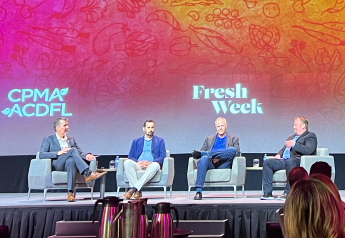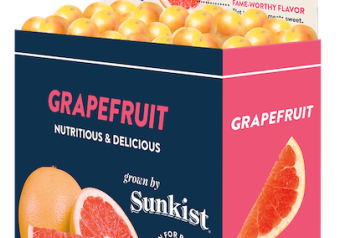Western Growers releases inaugural Harvest Automation Report

When Western Growers launched the Global Harvest Automation Initiative in February 2021 at the World Ag Expo in Tulare, Calif., one of the key deliverables was an annual report that took a quantitative look at how harvest innovation is impacting ag operators and which innovators are doing the heavy lifting by crop type. The first of these annual reports was rolled out at this year's World Ag Expo, again held in February.
Some of the key findings of the report:
- 65% of growers have spent $350,000-plus on automation in the last three years;
- More progress is being made in preharvest (weeding, thinning) and harvest assist (platforms, autonomous logistics vehicles) than in harvest automation, and growers expect that trend to continue;
- 75% of harvest and automation startups have less than 5 customers and less than 5 robots in service and have not raised A round financing; 25% of startups have raised an A or B round (which means none have achieved traction and scale yet);
- Average labor costs surpassed 50% of total costs and growers expect labor costs to grow by an additional 10%-30% over the next 3-5 years;
- Labor shortage has two challenges: (1) regulatory costs increased by 796% from 2006 to 2017, rising to $977/acre/year for specialty crops (and have increased since 2017); and (2) usage of H-2A temporary agricultural workers by growers increased over 500% from 2005 to 2020, from 48,000 to 275,000. This puts pressure on growers and regulatory approval processes to make permit decisions in a timely manner or the grower risks nonavailability of harvest labor and losing a crop.
Two case studies show some of the key innovation areas that can have a positive impact on harvest operations by increasing the efficiency of both human labor and robots.
Burro, a collaborative robot developed by Philadelphia-based Augean Robotics Inc., helps table grape harvest crews move picked grapes from the field to the truck. In one recent field trial, a harvest crew member was assigned to optimize the use of the Burro working with the crew. Overall crew efficiency increased 15% to 30% and the Burro manager got paid exactly as if they were performing picking operations. This is the model that is increasingly in use by farming operators — automation solutions working to help growers optimize their increasingly limited farm labor.
In another key area of innovation, high-rise broccoli provides an easier visual experience for human and robot harvesters. Harvest output increased from 400 boxes per hour to 600-700 boxes per hour. As a result, the labor crew got a 60% pay increase because crew members were paid on the same piece rate but able to pick faster. Growers get increased harvest efficiency.
Jumpstarting startup ag-tech companies
Western Growers is focused on the following objectives to help reduce the amount that harvest automation startups need to spend to get to scale:
- Building an open-source common modular architecture — think Lego blocks for ag-tech that allow startups to transition from building every component themselves (image library, artificial intelligence to turn images into instructions, robot arms to move the end effectors that do the picking) to an 80-10-10 model, in which 80% of the product uses off-the-shelf components, 10% is customization of the off-the-shelf components, and 10% is a brand new IP address, a numeric identification given to computers connected to the internet (which we think will be focused on the end effector and AI layers);
- Help accelerate the go-to market for the startups by validating the strategies, providing introductions to potential sales and support partners, and working with them on grower conversations, field trials and case studies. Western Growers believes that, by funding the development of a tech stack for $15-25 million, we can save every startup $8-12 million and 2-4 years of research and development/product development.
- The Next-Gen Ag Workers program received a $750k California Department of Food and Agriculture grant to upskill and train 3,000 California Community College students in the next four years to help close the skills gap growers and ag-tech companies are facing.
For the year two report, which will launch at next year's World Ag Expo in Tulare, Calif., Western Growers is going to focus on a couple of big strategic areas that we could not cover in depth in year one: controlled environment agriculture, impact of increased use of H-2A labor and Europe. How can we bring quality technologies over from Europe to North America faster and more effectively?
Western Growers, along with our partners Global Organization for Agricultural Robotics and University of California Ag and Natural Resources, is bringing the specialty crop world to Fresno via the California Agricultural Robotics and Technology Forum, aka FIRA USA, set for Oct. 18-20. The event will include three days of in-depth conversations on research and development, commercialization, and field demos. We expect many of the growers and startups that contributed to this report will attend FIRA USA and we look forward to continuing to collaborate with them.
Walt Duflock is the vice president of innovation for Western Growers.







